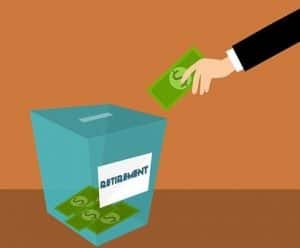The COVID-19 pandemic has caused much uncertainty over the past eight months and has hit the labor market particularly hard. With businesses around the country laying off employees or permanently closing, along with increased health risk for senior workers, it has pushed many into early retirement. However, financially, many may not be ready to retire.
A recent report published by three economists found that the pandemic has stimulated an increase in early retirement. They observed that among the people who had left the labor force through early April 2020, 60% said they were retired, up from 53% in January 2020. The largest increase was among people over 65, but nearly half of this group were 50 to 65.1
What can you do if you find yourself suddenly ‘retired’ and in need of securing your financial future?
Establish a Retirement Budget
Start by making a list of your monthly expenses, such as mortgage payment, water, cable, telephone, and electric bill. Then review your year-end credit card and bank statements to see where you spent the most money. After the review, determine if there are any areas where you may be able to scale back now that you are retired.
Determine Essential Expenses
There are few expenses considered essential to living and to include in your budget. As a homeowner, you will need to account for utilities, maintenance, and possible expensive home repairs down the road. Transportation should include the cost of gas, public transportation, along with vehicle maintenance expenses. If you are thinking about purchasing a new car, factor in that expense too.
Generally, spending on food will more than likely remain the same.

Consider All Sources of Income
It is highly recommended you speak with a certified financial planner to help you navigate the options that are best for your circumstances. You may need guidance when it comes to your retirement accounts, 401(k) accounts, IRAs, pensions, possible company buyout offer, or stock options. A financial planner may be able to advise you about long-term strategies to ensure you don’t outlive your retirement fund.
How A Reverse Mortgage May Help
A reverse mortgage is a loan available to senior homeowners who are 62 years and older which allows them to convert a part of their home’s equity into cash or a line of credit. Many borrowers use a reverse mortgage simply to pay off their current mortgage loan which eliminates their monthly mortgage payment2 and can provide extra cash flow throughout retirement.3 Funds can be used to cover daily expenses, medical bills, or even long-term care.
Borrowers with significant equity in their home may also be eligible to receive substantial funds3 that can be used for retirement planning through:
- A line of credit that will grow over time4 and can be accessed on an as-needed basis
- A lump-sum payment
- A set amount of monthly payments
A combination of these options can also be utilized to meet specific retirement goals.
If you are a senior homeowner, a reverse mortgage may be a good option to add to your retirement plan. Call 800.976.6211 and speak with a licensed reverse mortgage loan advisor.
Important Disclosures
1 https://papers.ssrn.com/sol3/papers.cfm?abstract_id=3584089&mod=article_inline
2 Your current mortgage(s) and any other existing liens against the property must be paid off at or before closing. You must live in the home as your primary residence, continue to pay required property taxes, homeowners insurance, and maintain the home according to FHA requirements. Failure to meet these requirements can trigger a loan default that may result in foreclosure.
3The funds available to the borrower may be restricted for the first 12 months after loan closing, due to HECM reverse mortgage requirements. In addition, the borrower may need to set aside additional funds from the loan proceeds to pay for taxes and insurance. The borrower must live in the home as their primary residence, continue to pay required property taxes, homeowners insurance, and maintain the home according to FHA requirements. Failure to meet these requirements can trigger a loan default that may result in foreclosure.
4The reverse mortgage loan balance grows at the same rate as the available line of credit. The line of credit growth occurs and is only a benefit when a portion of the line of credit is not used. The unused line of credit grows over time and more funds become available during the life of the loan.
